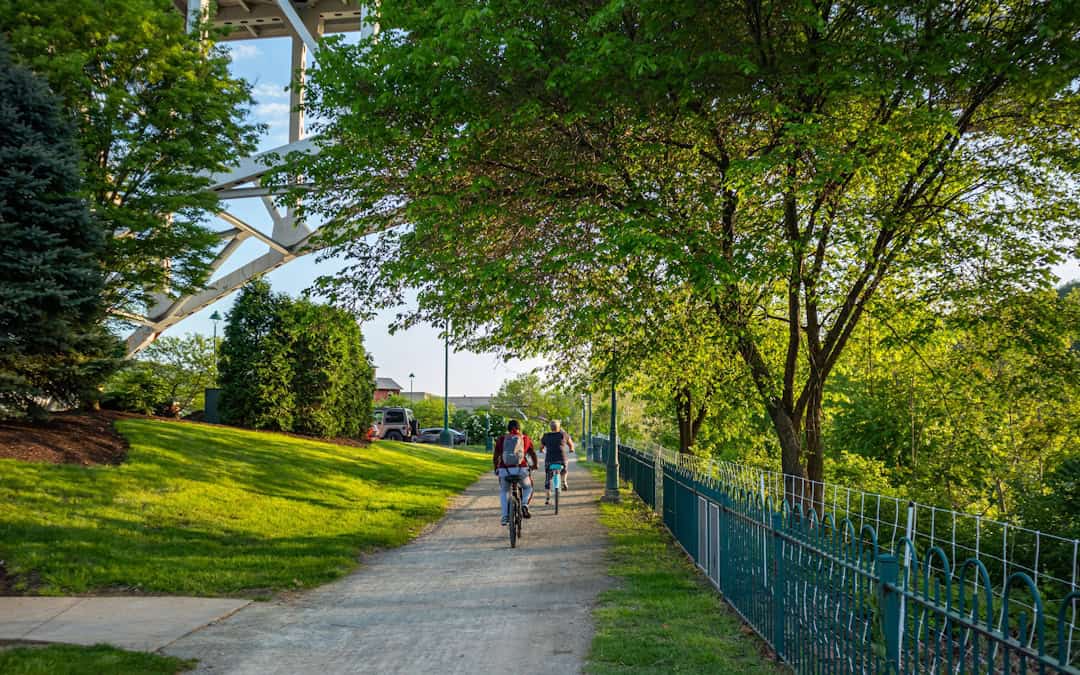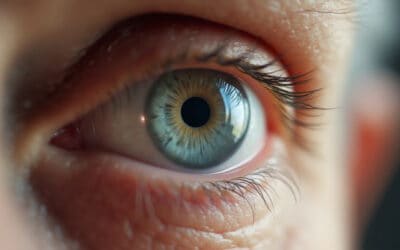After trudging through the cold, dark stretch of a Pennsylvania winter, springtime is finally on the horizon. Pittsburgh is a beautiful place in the spring and summer months. Feeling the warm sun on your face and seeing the city’s natural wonders bloom can provide an emotional boost to your daily life. Unfortunately, these sensory pleasures also signal the return of allergy season. The Asthma and Allergy Foundation of America found that Pittsburgh currently ranks as the 63rd worst city for allergy sufferers in the country.
The rise of pollen in the air leads to allergic reactions such as itchy and watery eyes for millions of people each year – all evidence shows that allergy season is getting longer and more intense over time. Dealing with all of the symptoms of allergy season can be a real impediment to enjoying the bright points of spring and summer weather. To keep yourself healthy and happy over the next few months, we put together this practical guide that explores some of the main causes of spring and summer allergies in Pittsburgh, how they affect your eyes in the short and long term, and ways to protect yourself excessive airborne pollen.
What are the Main Contributors to Allergies in Pittsburgh?
The main culprits of allergies in Pittsburgh shift depending on the month. Understanding the different allergens that come to the fore during particular seasons can help you avoid being overwhelmed by your symptoms and feeling unable to live your life comfortably.
As the snow melts and the spring months begin, trees (oak, birch, and maple trees most commonly) release pollen into the air. The wind carries the pollen across the region and causes many people to have allergic reactions. Although rain washes away airborne pollen, the tree pollen counts can rise again after rainy days.
In the summer, grass pollen becomes a bigger contributor to seasonal allergies. Northern grasses such as timothy are the most likely to cause problems for Pittsburgh residents.
In addition to tree and grass pollen, there are also other sources that can cause allergies all year round. These sources include pet dander, mold spores, and dust mites which may affect people with similar symptoms as those encountered with pollen.
Impact of Pittsburgh’s Three Rivers and Green Spaces on Allergen Distribution
Pittsburgh’s renowned three rivers and green spaces has considerable impact on allergen distribution in the region. The unique geography of the Allegheny, Monongahela and Ohio rivers, combined with the city’s abundant green spaces, significantly influences the patterns of airborne pollen. Some of these factors include:
River valley effects: Each river valley creates a natural channel that can funnel and concentrate airborne pollen. During spring months, morning fog and humidity in river valleys can also trap allergens closer to the ground level of walkways and exercise paths. And occasional temperature inversions in the valley area can further trap pollens and other allergens, preventing them from dispersing.
Moisture and mold factors: River areas can have higher humidity which is more favorable for mold spore production. And seasonal flooding can also lead to an increase in mold growth, as well as potentially extending mold season due to prolonged dampness.
Wind patterns and distribution: Studies have shown that rivers create their own microclimate wind patterns that can carry allergens from green spaces to urban areas. And in Pittsburgh, the three rivers convergence can actually create circular air patterns that keep allergens circulating in the downtown area.
Green space contributions: Pittsburgh’s parks and green spaces have a variety of tree species that release pollen at different times throughout the season, which effectively extends the overall allergy season.
Other unique factors: The hills and valleys in Pittsburgh create pollen “pockets” where allergen concentrations can be significantly higher than in other “flat” areas just a short distance away. And even areas like Mount Washington can experience different allergen patterns than low-lying neighborhoods due to the elevation difference.
These unique geographical features of Pittsburgh make the airborne pollen patterns more complex than other cities. Take some time to familiarize yourself with your neighborhood and its location relative to the rivers and large green spaces. This, along with any specific trails and pathways you frequently use will help you become more aware of the factors that might affect your allergy symptoms.
What are the Specific Allergy Triggers in Pittsburgh?
We’ve covered the numerous sources for seasonal allergies, but what activates these trees and types of grass to release pollen in the first place? Here are some of the main factors that lead to pollen spreading through the Pittsburgh area.
Time of Day
Most plants release pollen during the early hours of the day as the sun rises. The pollen count then decreases during the afternoon as plants try to conserve water and energy in the midst of higher temperatures.
Extreme heat during long summer days can also force pollen grains to settle down faster, dropping the amount of airborne pollen even lower. A slight resurgence then occurs in the evening when the temperature becomes more manageable.
Weather Conditions
Weather patterns also play a role in the amount of pollen in the air. Humidity, altitude, the speed and direction of wind, and rainfall all affect the pollen count on any given day. And as we explored earlier in this article, the unique geography of Pittsburgh creates its own microclimate in various areas of the city.
Dry conditions with moderate wind speed are the most conducive weather conditions for spreading pollen. On the other hand, rain can wash away pollen grains to temporarily lower the pollen count.
Changes to Pollen Season
Warmer seasonal air temperatures, more frost-free days and a greater amount of carbon dioxide (CO2) in the atmosphere is causing the Spring pollen season to get longer and more intense. The extended season increases your exposure to airborne pollen, which can trigger allergy symptoms starting as early as late March and lasting well into the summer months.
Increased Air Pollution
Extensive research has proven that air pollution is harmful to humans and animals. But the impact of contaminated air on plants is a less discussed topic. Plants that take in a lot of air pollutants release more allergens, which can then cause more intense allergic reactions in people. Air pollution can also damage our body’s defenses to pollen, making seasonal allergies feel even worse.
It’s probably no secret that Pittsburgh and Allegheny County have some of the worst air pollution in the United States. The excessive amount of unhealthy particles may not only affect your overall health, but they can also trigger irritating eye allergies anytime they exceed normal levels.
How Seasonal Allergies Affect Your Eyes
Seasonal allergies are thought of as sneezing or coughing bouts in the minds of most, but they can also impact your eyes in problematic ways. In fact, eye allergies (also called “allergic conjunctivitis” or “ocular allergy”) are quite common for people in Pittsburgh and western Pennsylvania.
When an allergen comes in contact with your eyes, cells in your eye release substances such as histamine to combat the allergen. This will lead to any of the following symptoms:
- Itchy eyes
- Red eyes
- A burning sensation
- Watery eyes
- Puffy eyelids
- Light sensitivity
Seasonal allergies share enough symptoms with eye infections to confuse the two, but there are some crucial differences between them. Infections can be caused by viruses, bacteria, parasites, or a fungus, and have a longer list of symptoms in line with a wider set of potential agents. It also should be noted that eye infections will typically start in just one eye, while allergies will typically affect both eyes.
If you feel serious eye pain or anything beyond tear-like fluids coming from the eye, it is probably a more significant condition than allergies. It’s important to consult with an eye doctor in Pittsburgh to diagnose the condition so you can get the right treatment and minimize the risk of an eye disease causing damage to your eye or spreading an infection to others in your community.
Prevention Strategies for Seasonal Allergies
You can’t completely avoid seasonal allergies, but you can take measures to protect yourself from the worst symptoms. Here are some strategies you can use to suppress seasonal allergies:
- Stay indoors as much as possible when pollen counts are at their highest. Keep informed about local air quality indexes and pollen forecasts when planning any outdoor activities. In Pittsburgh, Pollen.com and IQAir.com are good resources to bookmark.
- If you are particularly susceptible to the allergens outside, talk with the specialists at our optical shop about protective eyewear that can help shield your eyes from pollen.
- Keep your windows closed to prevent allergens from getting into your home. Use air conditioning instead of a window fan.
- Consider buying an air purifier or humidifier to remove pollen and other pollutants from your environment.
- Use a wet mop or rag to clean floors to prevent sending dust and particles back into the indoor air.
- Avoid rubbing your eyes. This could cause swelling and irritation that can make any condition worse.
Potential Treatment Options
There are many available methods for treating and managing seasonal allergies. Over-the-counter (OTC) medications can provide short-term relief for some symptoms. Examples of OTC remedies include:
- Artificial tears: Tear substitutes temporarily wash allergens from the eye and add moisture to heal dry or irritated eyes.
- Decongestants: OTC decongestants reduce redness in the eyes by narrowing the blood vessels. Prolonged use of these eyedrops may lead to a rebound effect where swelling and redness actually increase after two to three days so be sure to carefully read and follow the specific label directions.
- Oral antihistamines: While oral antihistamines can provide some relief for itchy eyes, they can also worsen allergy symptoms and dry eyes. Since each person is different, you may need to try a few different OTC remedies to see what works best for you.
If your symptoms are stubborn or continue making your life uncomfortable, a doctor may prescribe medications that are more targeted against specific allergies. Examples of these prescription medications include:
- Antihistamine/Mast-cell stabilizers: The combination of antihistamines and a mast-cell stabilizer relieves itchiness and prevents eye allergies.
- Corticosteroid eyedrops: Steroid eye drops are used to treat chronic allergy symptoms such as itching, redness, or swelling. They should never be used without the guidance of a medical professional because of the potential for serious side effects (infections, glaucoma, cataracts).
- Immunotherapy shots: Allergy shots build up your body’s tolerance by injecting a small amount of an allergen and gradually increasing the dosage over time.
Come to Chang Eye Care for Great Eye Care in Pittsburgh
Seasonal allergies don’t always get treated like serious conditions, but the dangers of not getting appropriate care are too serious to ignore. If you are suffering from serious symptoms that don’t seem to be improving, it’s time to meet with an eye doctor.
Chang Eye Group has been providing ocular care to patients across the Pittsburgh area since 1990. Our experienced team will conduct multiple tests to diagnose your ailment and craft a specialized treatment plan to bring your eyes back to health. If you have any concerns about the state of your eyes, please contact us today to schedule an appointment.






